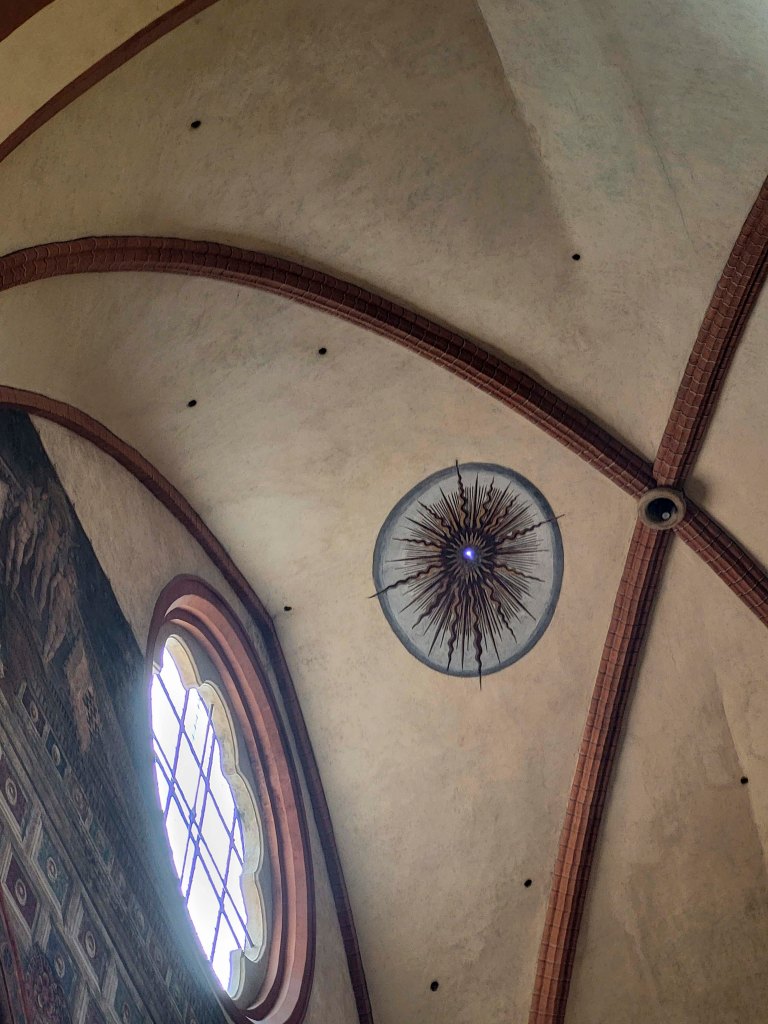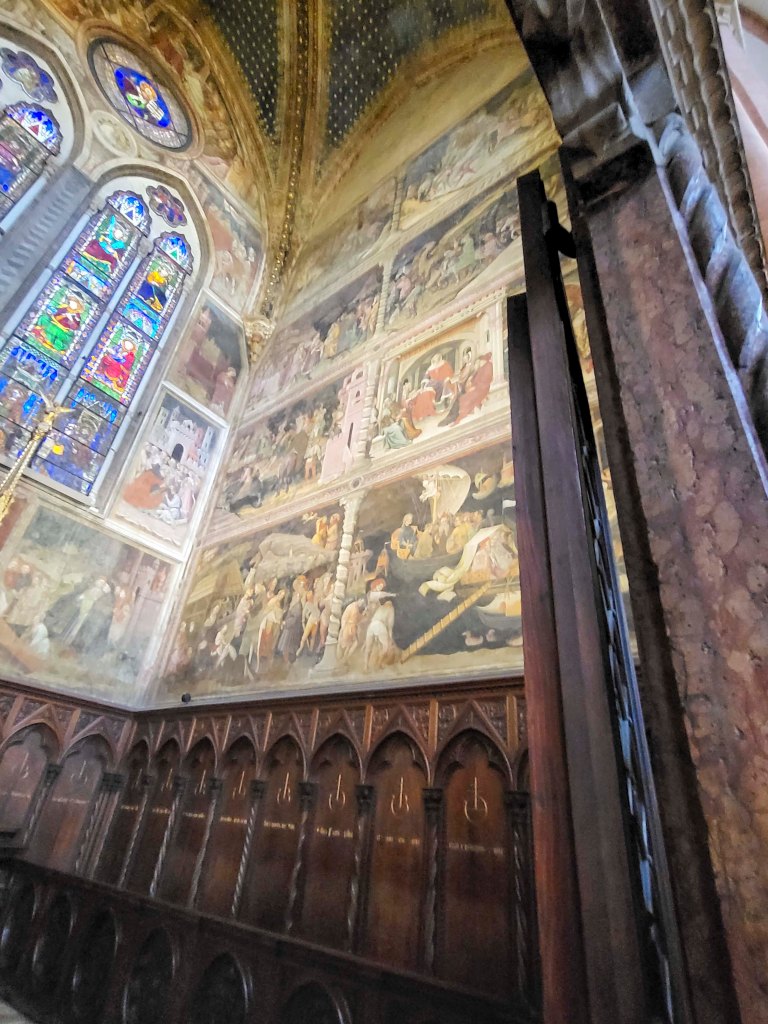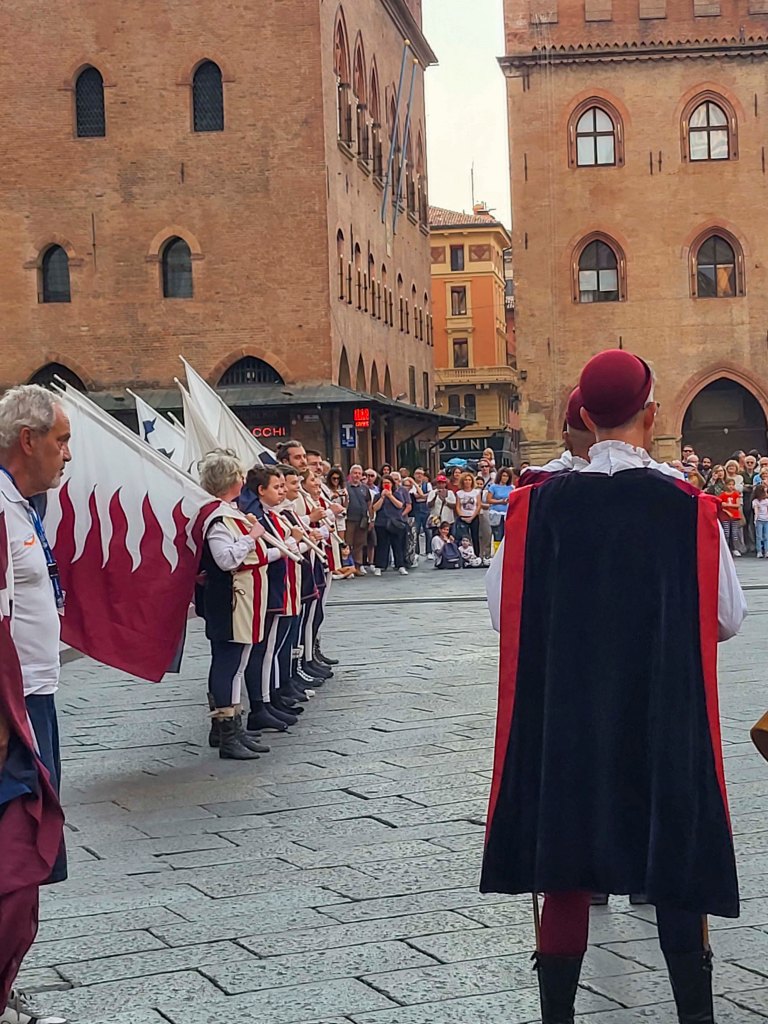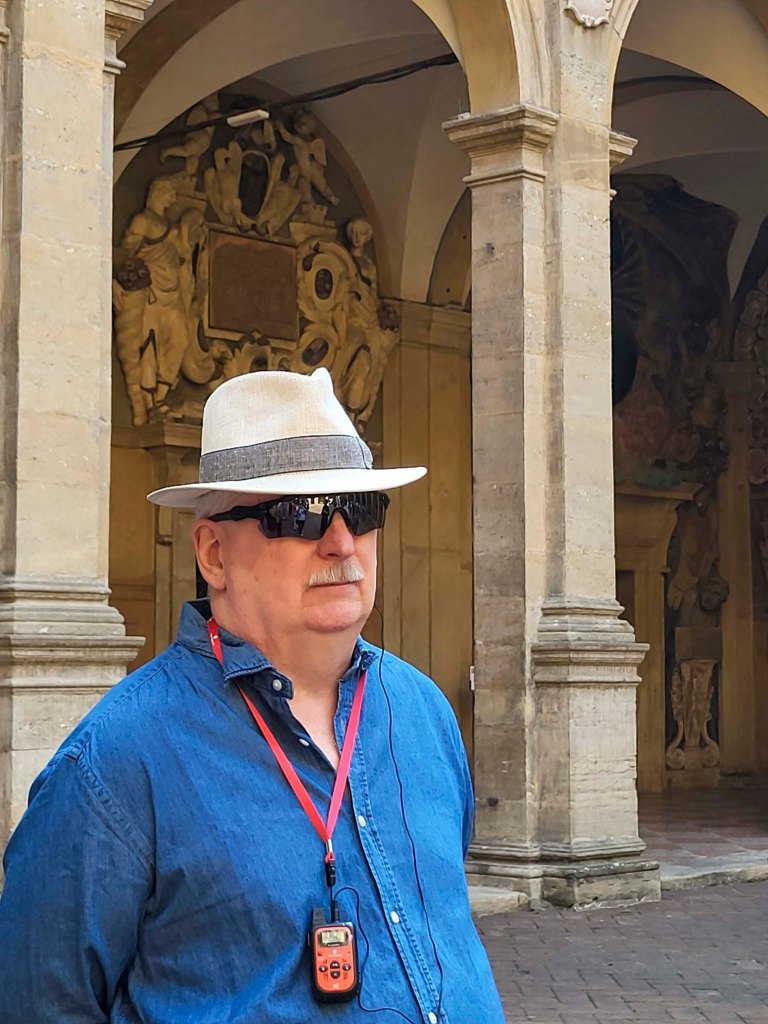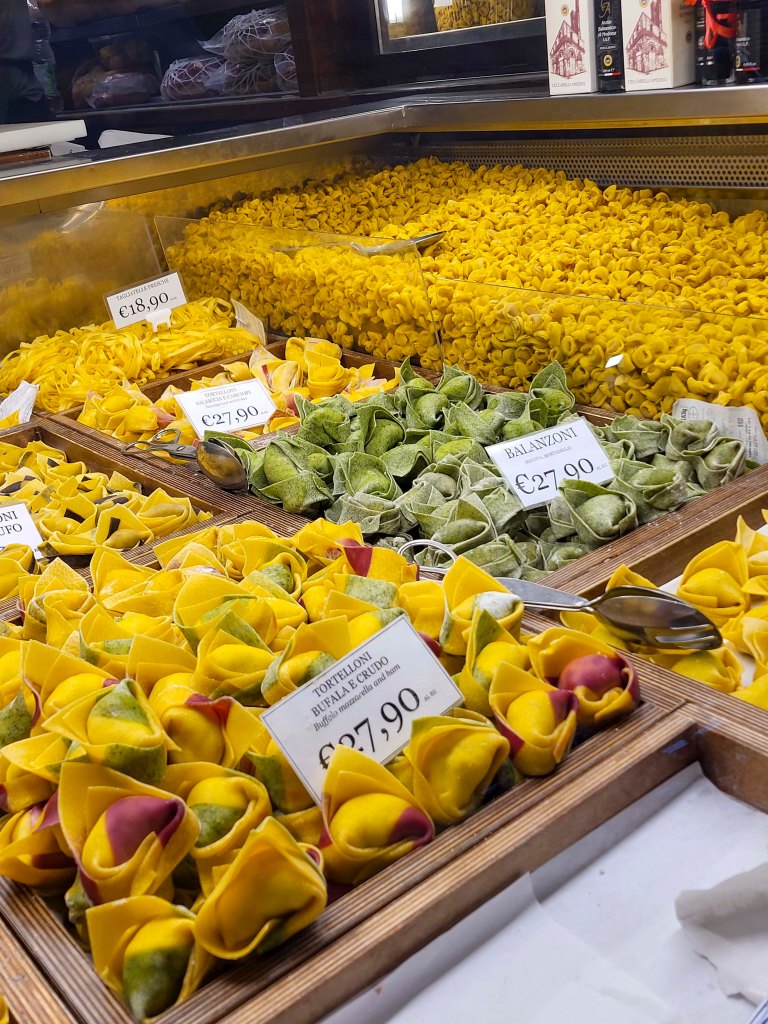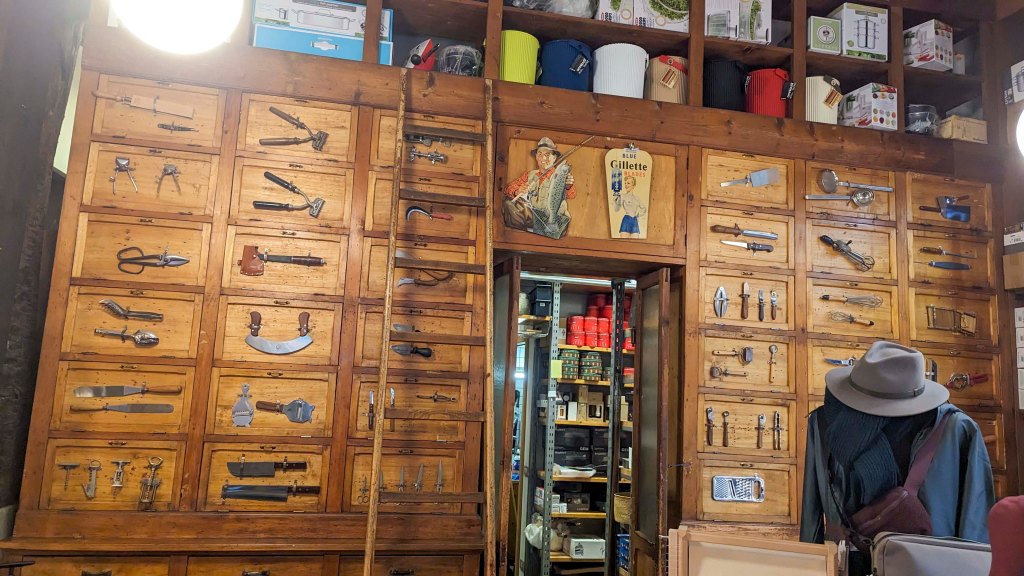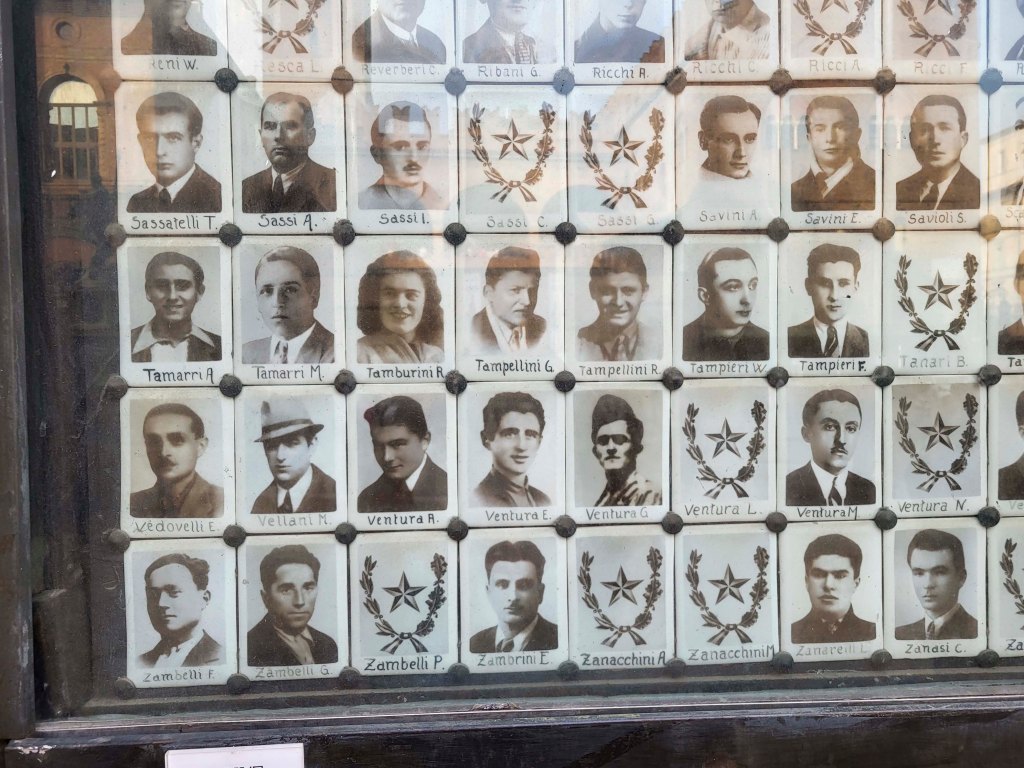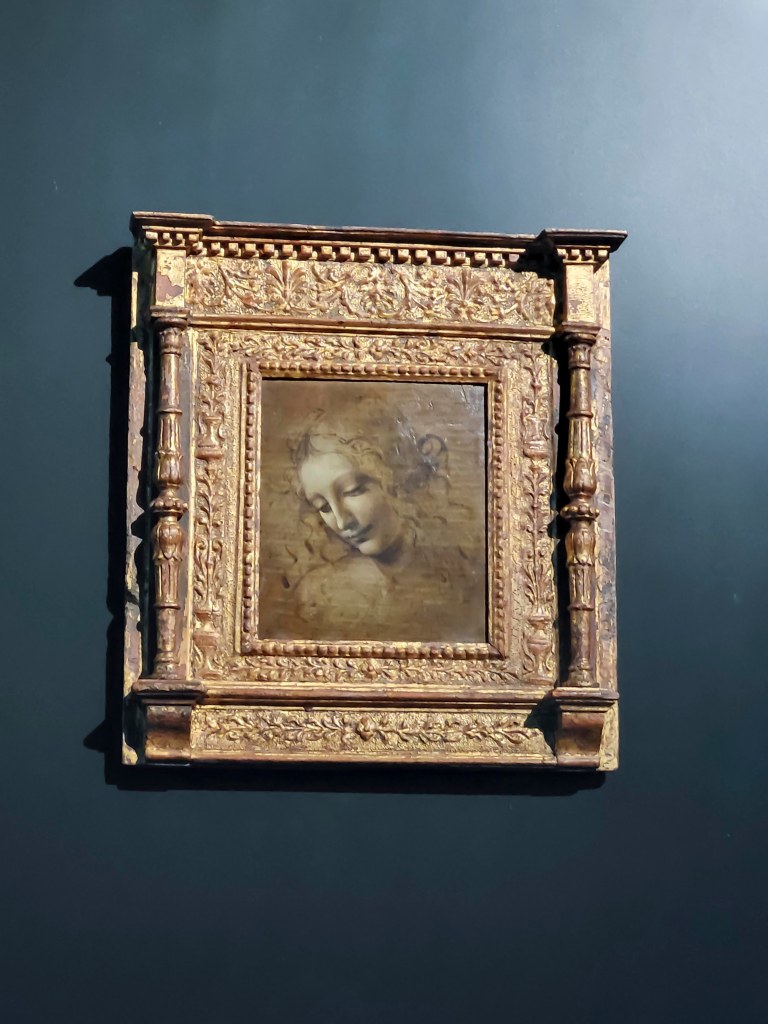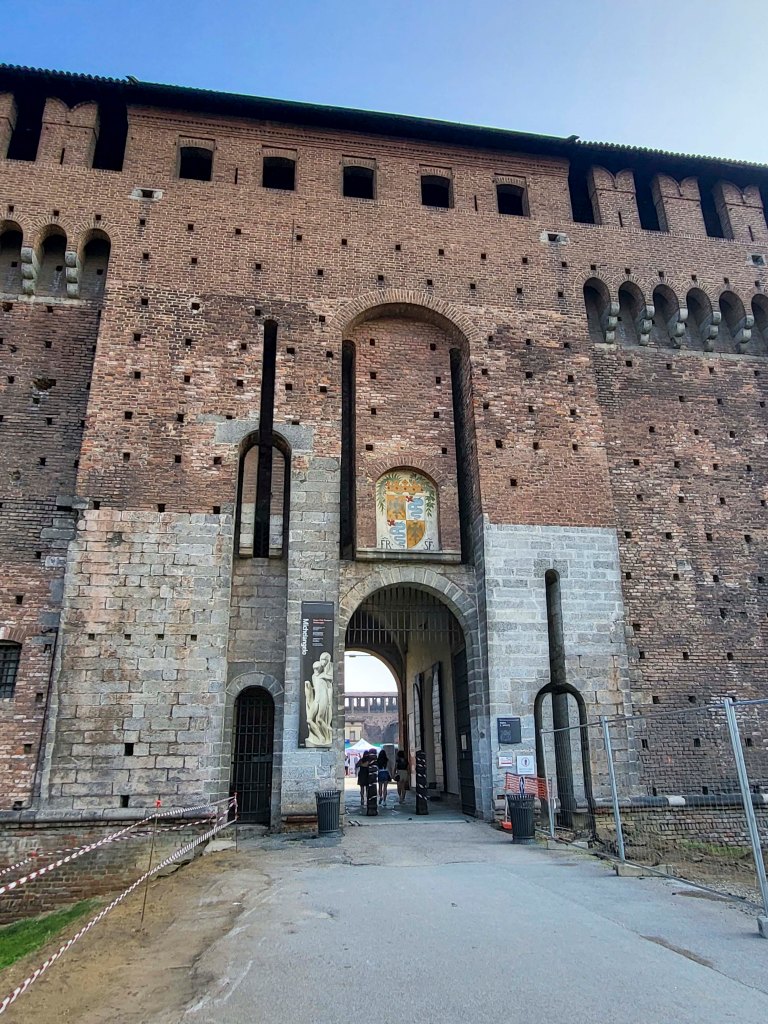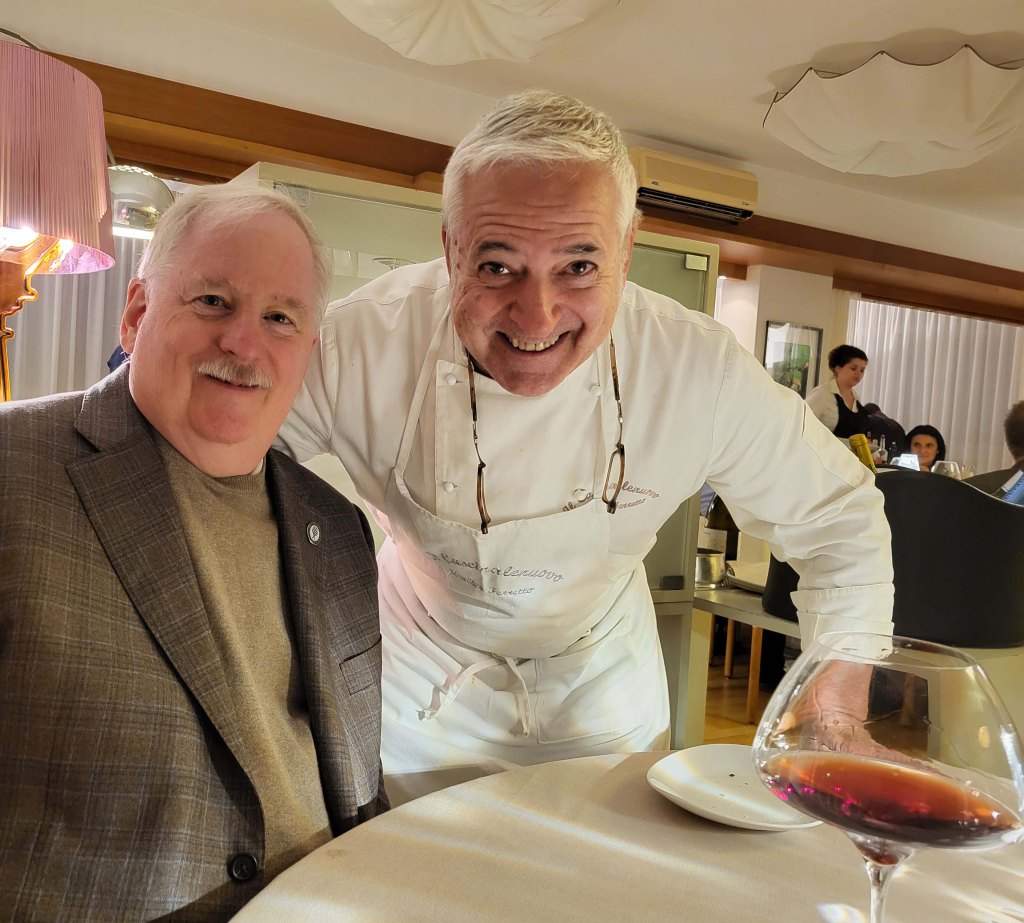Our recent 4-day journey through several cities of northern Italy brought us back to familiar places, each with a unique purpose. In Bologna, our mission was Michelangelo; in Modena, it was all about balsamic vinegar; Parma beckoned us with Leonardo da Vinci, and Milan offered a wine-tasting adventure for Jim and another rendezvous with Michelangelo for me. Our final stop in Alba was a truffle extravaganza.
After the description of each visit, I’ve included photos with captions – most from Bologna and Alba.
Bologna
We have been to Bologna several times for short visits but never stayed long enough to really get to see the city. For this trip I wanted to see three sculptures by Michelangelo. A year or so ago I read “The Agony and the Ecstasy” by Irving Stone, a historical fiction about Michelangelo. It talks about each of the sculptures he made, the challenges, the circumstances, the subjects, etc. At the end of the book there is a list of all the sculptures and other art that he created that are still available to be seen; seeing each of the sculptures that are in Italy has become my objective. When Michelangelo was still fairly young, he created three statues for the Basilica di San Domenico. They are part of a large monument containing the remains of Saint Domenico. It is interesting to see Michelangelo’s statues intermixed with other artists’ work – you can see how Michelangelo’s style and capabilities are so much different than the other artists.
We were surprised to learn that the day that we arrived was the biggest festival day of the year in Bologna. There were many events in Piazza Maggiore in the city center, including music, dancing, drums, flag throwing and even fireworks! We were both quite surprised that they were going to do fireworks in the middle of a historic square but they certainly did; we saw fireworks that were let off from the ground 100 meters from us and on top of a historic building
On our earlier visits to Bologna, we were disappointed in the number of graffiti, the random mix of new and old buildings near the city center, and the general grittiness of the city. We saw too much graffiti, but also saw more beauty during a two-hour walking tour that helped us to understand the history of the city. For example, we learned that Bologna was bombed heavily during World War 2. Today you might see a beautiful old building but it was likely restored after the war and then next to it is a new building because the earlier building was totally destroyed.
I have a much better sense of Bologna and look forward to returning in the future.
Modena
Next, we headed to Modena, a small town about an hour from Bologna with one simple objective: visit Acetaia Cavedoni, a small farm that we’ve visited several times before. They make balsamic vinegar and we have been on their tour several times (see my friends’ blog post that describes the tour and how balsamic is made. Fascinating!) Today our goal was simply to buy some balsamic for ourselves and for our friends and to catch up with the owners. A bonus was the beautiful grapevines that are turning color for autumn.
Parma
You may not have recognized the name of Parma but you certainly know its primary product – Parmigiano Reggiano cheese, which is very different than “Parmesan” cheese. Parmigiano Reggiano DOP can only be made in the province of Parma. Today we were not visiting to learn about the cheese or even buy some, but to see a particular painting by Leonardo da Vinci. As I was planning this trip, this painting popped up and I was transfixed. The painting is called “La Scapigliata” and I love the precise detailing of the face and the use of shadow, next to the sketch-like hair and torso. How does this work together? No idea, but it does! The painting was in one of several museums located in a huge palazzo (palace) that was owned by the Farnese family. The surprises were the incredible wooden theater, built for a visit of Cosimo de Medici, and an incredible library that is still used by students of the University of Parma and others.
Milan
Our next destination was Milan. Jim would be meeting two friends from Lucca at a wine tasting. They tasted about 100 wines in four hours. How do they do that? Well, they don’t drink each of the tastes, but rather take a small amount then spit it out. Then they talk about it (a lot)!
My objective was to see a Michelangelo statue at Castello Sforzesco called Pietà Rondanini. A Pietà (Italian meaning “pity” or “compassion”) is a subject in Christian art depicting the Virgin Mary cradling the body of Jesus Christ after his descent from the cross. Michelangelo created three different Pietàs… one at the beginning of his career (in the Vatican), one mid-career (now in Florence) and one unfinished as he was working on it when he died (now in Milan). Each shows Mary’s sorrows as a mother grieving the loss of her son while also understanding the special spiritual nature of His life. Each is profound, but I have to say that the one in Florence is my favorite.
BTW, there are 33 statues by Michaelangelo in Italy; I’ve now seen 27 of them!
There was also lots of other museums within Castello Sforzesco. My plan was to see the Pietà, check out the Castello for a while, then walk to the Duomo (Cathedral). I spent way too much time at the Castello, so just headed back to the hotel. I met Jim after his wine tasting and then we headed to our final destination for this trip.
Alba
We stayed between Milan and Alba at Il Cascinalenuovo that they describe as a “restaurant with rooms.” This is a Michelin-starred restaurant with a few rooms that allow you to stay on property so that you don’t need to drive after a lengthy meal with wine. It met our needs perfectly. This is white truffle season and we splurged for a multi-course meal that included white truffles as a part of each course. Still, my favorite was the simple pasta with those wonderful truffles on top. The most interesting was a small piece of Robiola cheese, a bit of pepper and olive oil, and truffles – how can something so simple be SOOOO good?
So, what is a truffle? Truffles are edible fungi that grow underground near the roots of certain oak trees. They have a very distinct look—that sort of resembles a dark, small, lumpy rock or potato—and a flavor that’s savory, earthy, and completely unique. Some describe the aroma and flavor as a cross between honey and garlic. Actually, the aroma is much stronger than the taste and is the driving aspect of the experience. There are different types grown in various locations in the world, but most people would agree that the White Truffles from Alba are the best in the world. I do need to add that they are quite costly, so eating truffle shavings is truly a special experience!
Alba has a Truffle Fair each October where they sell these truffles to people who come from across the world. This is our third time visiting the Truffle Fair and we planned to buy two truffles – one for us and one for a friend. We found our truffles (36 and 41 grams, respectively), enjoyed the fair, then headed for home. We enjoyed several meals with our truffle and I was even able to duplicate the cheese dish for some friends that visited a few days later.
Retiring in Italy has allowed us to embark on numerous adventures throughout Italy and Europe. It has been a joy to revisiting our some of our favorite cities, uncovering new layers of history and experiences with each return.





